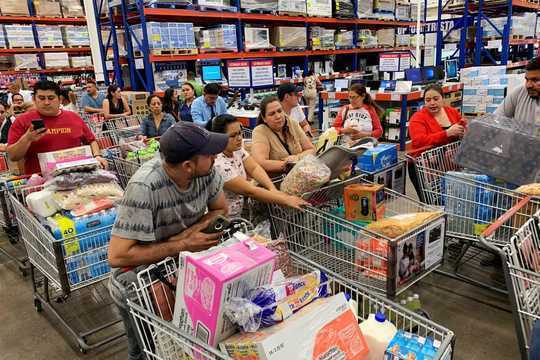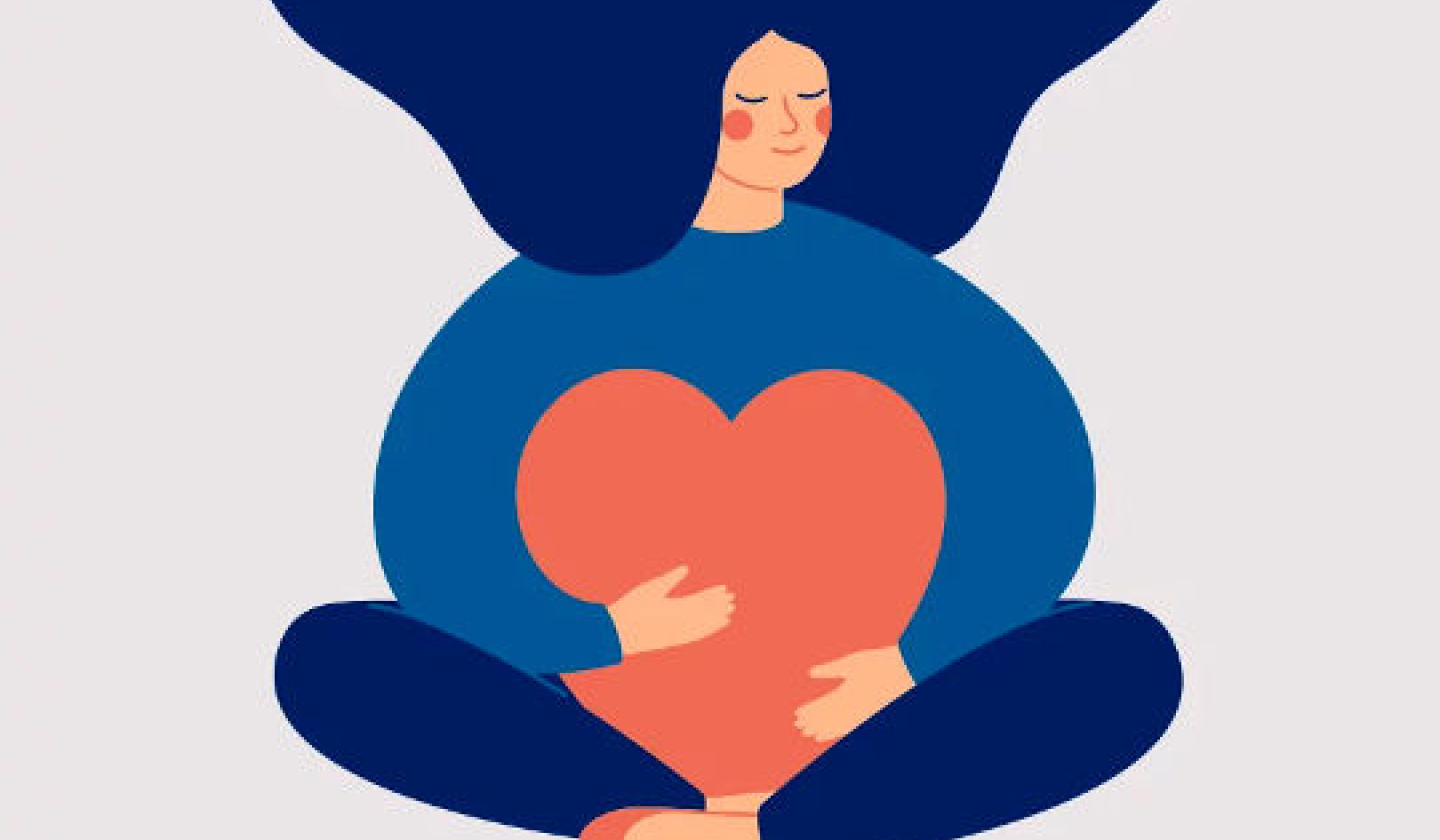
Panic buying has returned to Australia in the wake of its second-biggest city experiencing a spike in COVID-19. The Victorian government has reimposed stay-at-home restrictions on 36 of Melbourne’s 321 suburbs in response.
Once again supermarket stores are being emptied of toilet paper and other consumables.
But this panic buying isn’t just in affected areas. It’s not even limited to Victoria. Empty supermarket shelves have been reported in Canberra, Mittagong in the New South Wales southern highlands, and Bathurst in the NSW central tablelands.
As a preventative measure Coles and Woolworths have reintroduced nationwide limits on the amount of toilet paper shoppers can buy. Coles is also limiting packets of pasta, rice and long-life milk nationally, while Woolworths has so far done so only for Victoria.
Prime Minister Scott Morrison has called the panic buying “ridiculous”, and previously dubbed it “unAustralian”.
But are admonishments helpful in stopping panic buying?
That depends on what motivates people to panic buy. The COVID-19 pandemic has given us the chance to ask.
What motivates panic buying?
We’ve surveyed more than 600 Australians, first in April then again in June, about their stockpiling behaviour, attitudes and feelings.
Our results show about 17% of shoppers admitted to panic buying in April. About 6% were continuing to stockpile two months later, joined by an equal number who did not buy in April and feared missing out again.
Panic buyers and stockpilers were more likely to be younger and under financial and personal stress. A number of personality traits were also significant predictors. Those less agreeable, more anxious and less able to cope with uncertainty were more likely to panic buy.
These findings suggest panic buyers are likely to feel a lack of control in their lives and worry more about COVID-19. Stocking up on items gives them a sense of security in one part of their lives. They are likely to be less cooperative and considerate of others.
Studying panic buying
We recruited our 600 participants via consumer-survey company Pure Profile, which ensured our sample was representative of the Australian population.
We asked if they had “stockpiled”, and how much, in response to COVID-19, as well as questions about their income, education attainment, attitudes and personality.
Participants indicated their agreement with more than 100 statements such as:
- I am someone who is emotionally stable, not easily upset
- I spend too much time following COVID-19 related news coverage
- Obtaining food and basic household items has been a major source of stress.
Agreeableness
The strongest predictor of “early” panic buying was low “agreeableness”.
Agreeableness describes how motivated people are to cooperate with and consider the feelings of others. It is typically expressed as polite and compassionate behaviour. We measured this trait by asking respondents to agree or disagree with statements such as “I am someone who is sometimes rude to people” and “I am someone who can be cold and uncaring”.
Measures of agreeableness predict a range of considerate and helpful behaviours such as treating others fairly and helping others in need.
In our results, 23% of low scorers on agreeableness reported panic buying compared with 14% of high scorers.
Neuroticism
The second strongest predictor was high “neuroticism”.
Neuroticism describes a person’s experience of negative emotions such as worry, anxiety and uncertainty. Those with this trait tend to agree with statements such as “I often feel sad” or “I am temperamental and get emotional easily”.
High scorers experience negative emotions more intensely and more often. Our data shows that 22% of high scorers on neuroticism reported panic buying compared to 12% who scored low.
Our results also suggest these individuals are driven to stockpile to limit their need to go to the supermarket as much as fear of store supplies running out.
Financial stress
Stress also appears to be a significant factor. Panic buyers in our survey were significantly more likely to have been stood down or had their hours reduced due to COVID-19.
Those 32 and younger were about 40% more likely to have panic bought than those older. This is likely due to the economic impacts hitting younger workers hardest, as well as young families generally facing more financial and domestic strain.
Panic buyers also reported more time worrying about COVID-19, and more conflict in their household as a result of the pandemic.
Fear of missing out
The fear of missing out was the main predictor of respondents stockpiling in June. More than half these “late” stockpilers did not do so in April. They were far more likely to agree with the statement “Difficulties in obtaining basic household has been a major source of stress” than the April panic buyers.
So while panic buying is indeed more common in “selfish” people, it might also serve as a coping mechanism. People who experience higher levels of instability and uncertainty – due to personality disposition and/or their life circumstances have been disrupted – are most likely to panic buy and stockpile.
Stockpiling gives such individuals some sense of control and reduces one source of potential stress in their lives – the possible difficulty to obtain essential food and household products.
With more outbreaks of panic buying predicted over the next 12 months as new COVID-19 hotspots emerge, we need more strategies than condemnation to address that behaviour.![]()
About the Authors
Peter O'Connor, Professor, Business and Management, Queensland University of Technology; Jeromy Anglim, Lecturer in Research Methods in Psychology, Deakin University, and Luke Smillie, Associate Professor in Personality Psychology, University of Melbourne
This article is republished from The Conversation under a Creative Commons license. Read the original article.

Related Books:
Atomic Habits: An Easy & Proven Way to Build Good Habits & Break Bad Ones
by James Clear
Atomic Habits provides practical advice for developing good habits and breaking bad ones, based on scientific research on behavior change.
Click for more info or to order
The Four Tendencies: The Indispensable Personality Profiles That Reveal How to Make Your Life Better (and Other People's Lives Better, Too)
by Gretchen Rubin
The Four Tendencies identifies four personality types and explains how understanding your own tendencies can help you improve your relationships, work habits, and overall happiness.
Click for more info or to order
Think Again: The Power of Knowing What You Don't Know
by Adam Grant
Think Again explores how people can change their minds and attitudes, and offers strategies for improving critical thinking and decision making.
Click for more info or to order
The Body Keeps the Score: Brain, Mind, and Body in the Healing of Trauma
by Bessel van der Kolk
The Body Keeps the Score discusses the connection between trauma and physical health, and offers insights into how trauma can be treated and healed.
Click for more info or to order
The Psychology of Money: Timeless lessons on wealth, greed, and happiness
by Morgan Housel
The Psychology of Money examines the ways in which our attitudes and behaviors around money can shape our financial success and overall well-being.























